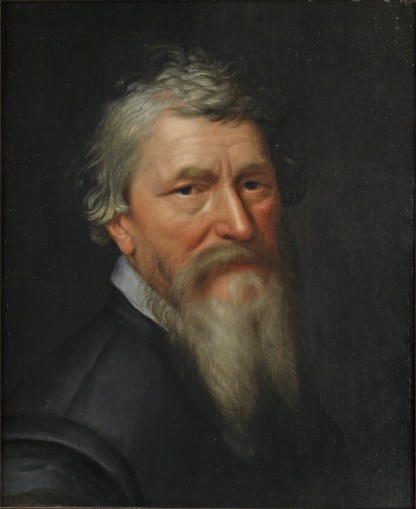Papenbroek Collection on:
[Wikipedia]
[Google]
[Amazon]
 The Papenbroek Collection is one of the largest 18th-century Dutch art collections. After the death of its owner,
The Papenbroek Collection is one of the largest 18th-century Dutch art collections. After the death of its owner,
 His collections of portraits and manuscripts were divided between Leiden University and the Athenaeum Illustre of Amsterdam. Amsterdam also received the painting ''View on the ruins of Palmyra'', the oldest known depiction of the legendary desert city of
His collections of portraits and manuscripts were divided between Leiden University and the Athenaeum Illustre of Amsterdam. Amsterdam also received the painting ''View on the ruins of Palmyra'', the oldest known depiction of the legendary desert city of
53 portraits of the collection being kept by the University of Amsterdam
h1>
 The Papenbroek Collection is one of the largest 18th-century Dutch art collections. After the death of its owner,
The Papenbroek Collection is one of the largest 18th-century Dutch art collections. After the death of its owner, Gerard van Papenbroek
Gerard is a masculine forename of Proto-Germanic origin, variations of which exist in many Germanic and Romance languages. Like many other early Germanic names, it is dithematic, consisting of two meaningful constituents put together. In this ca ...
(1673–1743), the antiquities were bequeathed to Leiden University
Leiden University (abbreviated as ''LEI''; nl, Universiteit Leiden) is a Public university, public research university in Leiden, Netherlands. The university was founded as a Protestant university in 1575 by William the Silent, William, Prince o ...
. These antiquities would become the earliest collection of the Dutch National Museum of Antiquities, and have been called a "decisive factor for the creation of the first academic chair of archaeology". The portraits and manuscripts were divided between Leiden University and the Athenaeum Illustre of Amsterdam
Athenaeum Illustre, or Amsterdamse Atheneum, was a city-sponsored 'illustrious school' founded after the beeldenstorm in the old ''Agnieten'' chapel on the Oudezijds Voorburgwal 231 in Amsterdam, Netherlands. Famous scientists such as Caspar Barlae ...
.
History
Gerard van Papenbroek was a member of the city elite inAmsterdam
Amsterdam ( , , , lit. ''The Dam on the River Amstel'') is the Capital of the Netherlands, capital and Municipalities of the Netherlands, most populous city of the Netherlands, with The Hague being the seat of government. It has a population ...
, had been an alderman
An alderman is a member of a Municipal government, municipal assembly or council in many Jurisdiction, jurisdictions founded upon English law. The term may be titular, denoting a high-ranking member of a borough or county council, a council membe ...
and became a burgomaster
Burgomaster (alternatively spelled burgermeister, literally "master of the town, master of the borough, master of the fortress, master of the citizens") is the English form of various terms in or derived from Germanic languages for the chief m ...
of the city in 1723. He began collecting art, a common pastime for the elite of the period. Instead of traveling to the Mediterranean he used his fortune to buy antiquities from other collectors at auctions. In this way Papenbroek gathered a part of the Reynst Collection and pieces from many other famous and lesser known collectors, including some Roman antiquities that had belonged to the Flemish painter Rubens
Sir Peter Paul Rubens (; ; 28 June 1577 – 30 May 1640) was a Flemish artist and diplomat from the Duchy of Brabant in the Southern Netherlands (modern-day Belgium). He is considered the most influential artist of the Flemish Baroque traditio ...
.
During his life Papenbroek put the collection on display in his townhouse, his country house and in the Nieuwe Kerk in Amsterdam. He attempted to have the collection published, but this would not be done until after his death.
When Papenbroek died in October 1743 his will stipulated that his collection of antiquities should go to Leiden University and was to be put on public display. The university thus gained about 150 pieces, which were welcomed with an official academic session after they had been arranged for public viewing. In 1746 a professor from Leiden published an illustrated catalogue of the collection, but after that little attention was paid to the antiquities.Halbertsma, R. B. (2003). ''Scholars, Travellers, and Trade: The Pioneer Years of the National Museum of Antiquities in Leiden, 1818-1840'', Routledge, p. 17-20
Eventually the National Museum of Antiquities would be founded in the early 19th century, and the world's first professor of archaeology
Archaeology or archeology is the scientific study of human activity through the recovery and analysis of material culture. The archaeological record consists of artifacts, architecture, biofacts or ecofacts, sites, and cultural landscap ...
, Caspar Reuvens
Caspar Jacob Christiaan Reuvens (22 January 1793 – 26 July 1835) was a Dutch historian and archaeologist. He was the founding director of the Rijksmuseum van Oudheden (Dutch National Museum of Antiquities) in Leiden, the world's first ever prof ...
, would transform the 'archaeological cabinet' into a real museum.
 His collections of portraits and manuscripts were divided between Leiden University and the Athenaeum Illustre of Amsterdam. Amsterdam also received the painting ''View on the ruins of Palmyra'', the oldest known depiction of the legendary desert city of
His collections of portraits and manuscripts were divided between Leiden University and the Athenaeum Illustre of Amsterdam. Amsterdam also received the painting ''View on the ruins of Palmyra'', the oldest known depiction of the legendary desert city of Palmyra
Palmyra (; Palmyrene: () ''Tadmor''; ar, تَدْمُر ''Tadmur'') is an ancient city in present-day Homs Governorate, Syria. Archaeological finds date back to the Neolithic period, and documents first mention the city in the early second ...
, in modern-day Syria, painted by G. Hofsted van Essen in 1693.
External links
53 portraits of the collection being kept by the University of Amsterdam
h1>
References
{{reflist, 2 Dutch art Former private collections